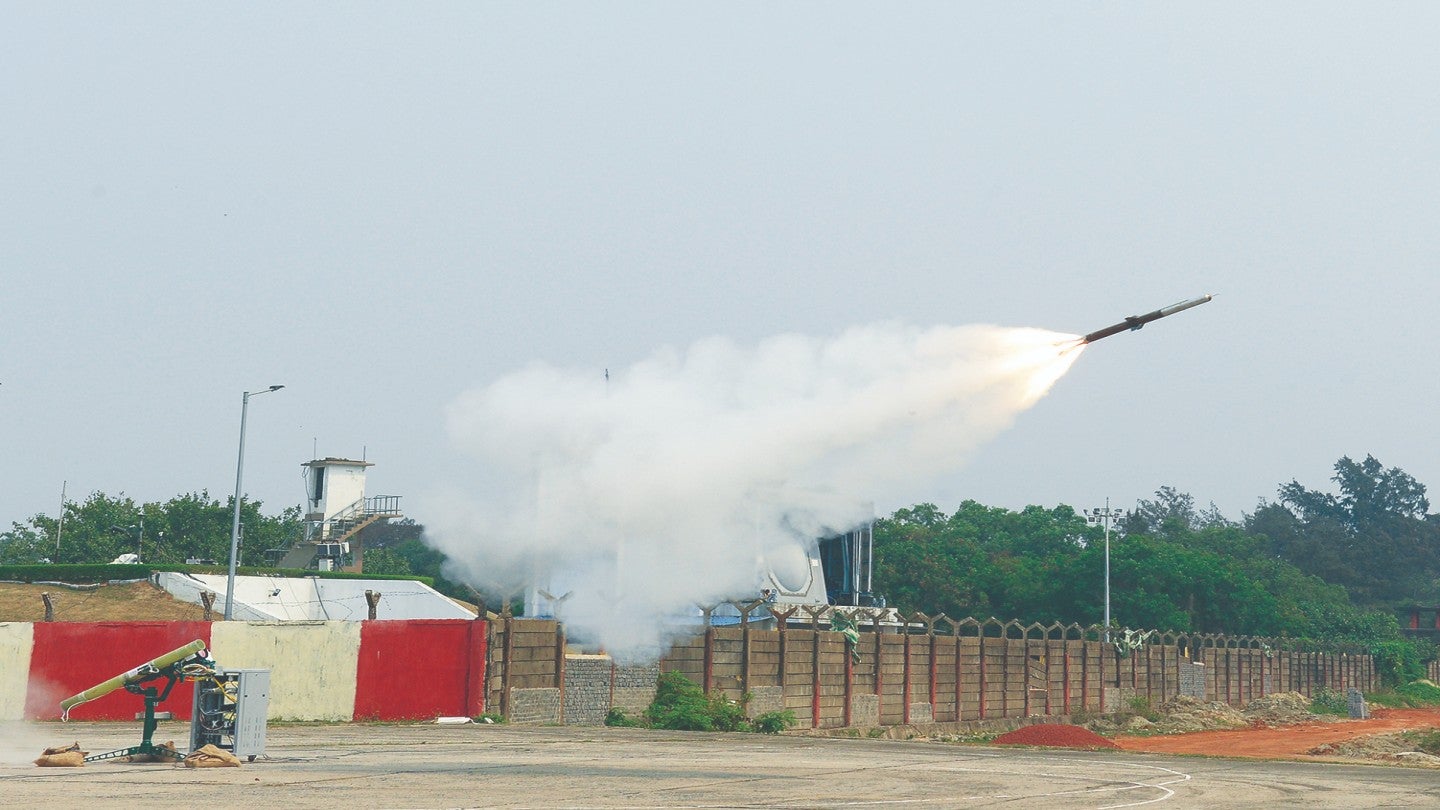
The Indian Ministry of Defence (MoD) has announced the successful completion of two consecutive flight tests of the very short-range air defence system (VSHORADS).
The test was carried out by India’s Defence Research and Development Organisation (DRDO) from the Integrated Test Range off the coast of Odisha in Chandipur, India, on 14 March.
As part of the tests, VSHORADS were fired from a ground-based portable launcher system to strike a high-speed uncrewed aerial target that was acting as an approaching and receding aircraft.
After being launched, the VSHORADS attained all the mission objectives and successfully intercepted designated targets.
The latest efforts were also appreciated by Indian Defence Minister Rajnath Singh, and MoD research and development secretary and DRDO chairman Dr Samir V Kamat.
Singh said: “The missile equipped with novel technologies will give further technological boost to the armed forces.”
In another development, the DRDO has successfully carried out the first flight test of the power take-off (PTO) shaft aboard the Light Combat Aircraft Tejas Limited Series Production-3 aircraft.
Announced by the Indian MoD, the test was held on 14 March in Bengaluru, India.
The PTO shaft is a crucial component of the aircraft that is equipped for supporting the fighter aircraft and its different variants’ future needs by minimising the cost and time of availability.
It has been designed and developed indigenously by the DRDO’s Combat Vehicles Research and Development Establishment (CVRDE) using a patented ‘Frequency Spanning Technique’ that allows the shaft to negotiate the operating speeds of an engine.
The test was carried out by the CVRDE in collaboration with Hindustan Aeronautics, Directorate General of Aeronautical Quality Assurance, the Centre for Military Airworthiness, and te Certification and Aeronautical Development Agency.
The component has now been transferred to Godrej & Boyce, Mumbai, and Lakshmi Technology and Engineering, Coimbatore.



